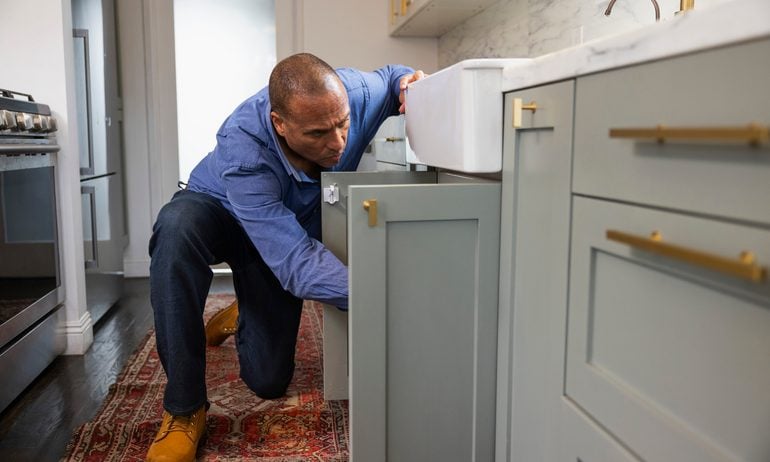Does a Home Warranty Cover Plumbing in 2025?
Home warranties typically cover plumbing systems, but some areas may be excluded depending on the plan.

Some or all of the mortgage lenders featured on our site are advertising partners of NerdWallet, but this does not influence our evaluations, lender star ratings or the order in which lenders are listed on the page. Our opinions are our own. Here is a list of our partners.
Home warranties typically cover plumbing systems, including certain types of pipe leakage and most kinds of water heaters.
Many home warranty plans also cover toilet components and seals, shower fixtures and clogged drains that can be accessed with a standard sewer cable.
» MORE: How home warranties work
What a home warranty covers
Unlike homeowners insurance, which covers your home’s structures and offers liability protection, home warranties protect your home’s non-structural systems and appliances. You can think of a home warranty as picking up where your insurance leaves off. When you have both kinds of coverage, all the main parts of your home — structures, systems and appliances — are protected.
A home warranty plan generally covers the following:
Plumbing systems, including toilet components, sump pumps, water heaters, water dispensers, garbage disposals and, in some cases, whirlpool or jetted tubs.
Electrical systems, including smoke detectors, doorbells, garage door openers, fan systems and central vacuum systems.
HVAC, including ductwork, air conditioning units and heating units.
Laundry appliances, including washing machines and dryers.
Kitchen appliances, including ovens, stoves, refrigerators, dishwashers, built-in microwave ovens, free-standing ice makers and trash compactors.
on American Home Shield's website
on Choice Home Warranty's website
on Liberty Home Guard's website
Common plumbing issues covered by a home warranty
Home warranties offer broad coverage for many parts of your home’s plumbing system. While each home warranty company has its own specific plan options and add-ons, coverage for repair or replacement due to normal wear and tear may include:
Breakage and leaks in the home’s water, gas, waste, or drain lines, as well as waste vent lines and pipes.
Clogged drains or lines that can be accessed with a standard sewer cable.
Groundwater sump pumps, if permanently installed. This coverage includes the battery if it’s only used for the pump.
Valve parts and components.
Gas and electric water heaters.
Garbage disposals.
Shower heads and shower arms.
Toilet mechanisms, tanks, bowls and wax ring seals.
Whirlpool and jetted tub motors, pumps and air switch assemblies.
What home warranties don’t cover for plumbing
Although home warranties typically cover many parts of a home’s plumbing system, expect some exclusions as well. Areas that may not be covered, depending on your plan and provider, include:
Root damage.
Line clogs outside the home’s foundation.
Clogs that are inaccessible by cable or snake.
Radon systems.
Sprinkler and fire-suppression systems.
Water softeners.
Water filtration or purification systems.
Water storage tanks.
Saunas or steam rooms (optional coverage may be available with some companies).
Caulking and grouting.
Shower enclosures, tubs, sinks, bidets and base pans.
Septic tanks.
Toilet lids and seats.
Because what’s covered can vary significantly between home warranty providers, read each plan option carefully before selecting the one that best suits your needs. If a specific part of your plumbing isn’t covered by a standard plan, you may be able to purchase an optional add-on plan for that component.

Looking for the right Home Warranty company?
Answer a few quick questions to get matched with providers that fit your needs — no personal information required.
on NerdWallet







